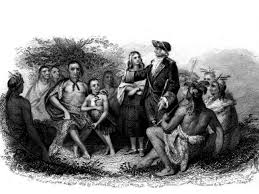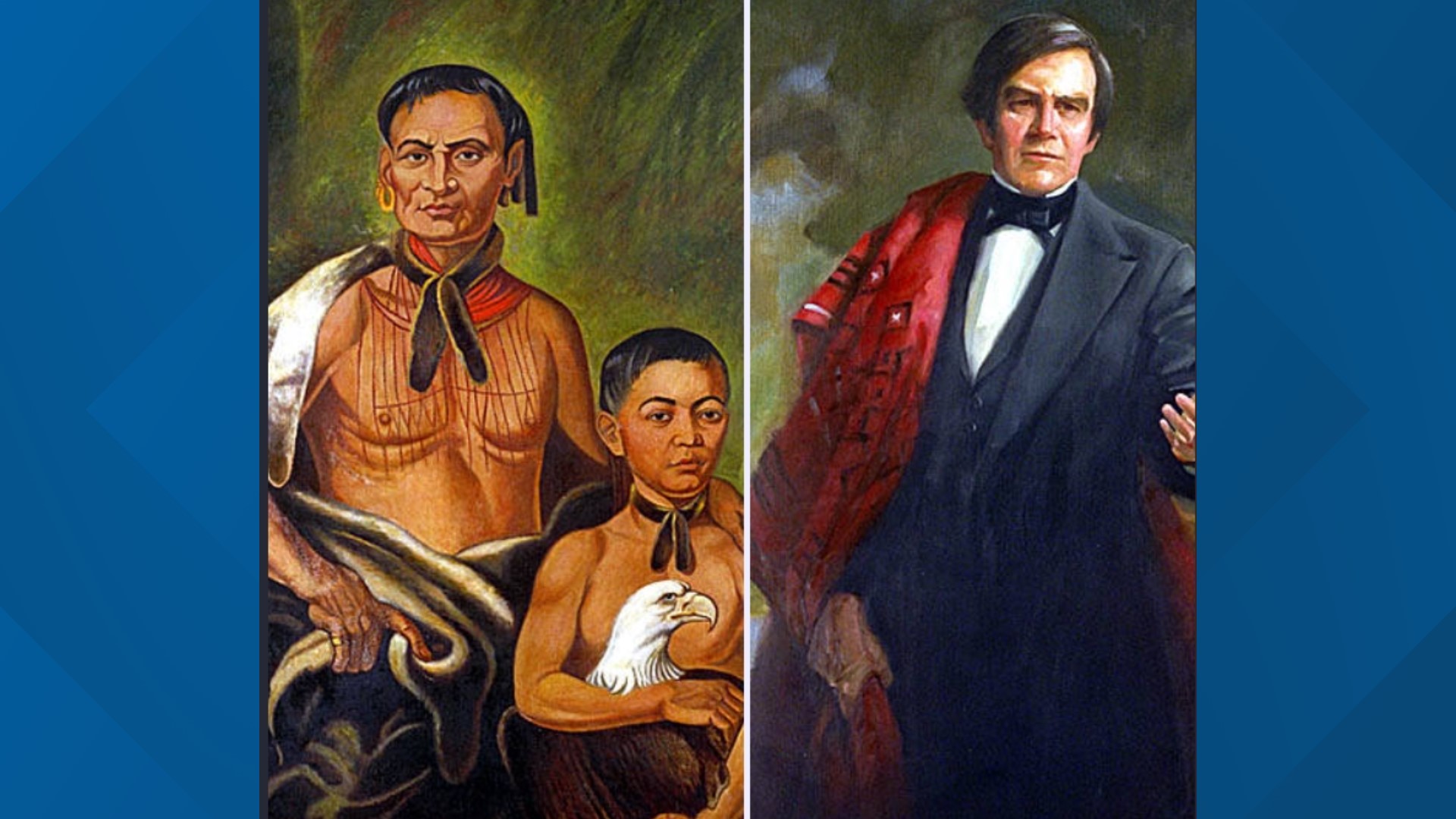Georgia’s Native American History: A Look Beyond the Reservations
Georgia’s Native American History: A Look Beyond the Reservations

The state of Georgia, with its lush forests, rolling hills, and vibrant cities, has a rich history. But did you know that this history also includes a vibrant Native American presence? While you won’t find any official "reservations" in Georgia today, the state’s indigenous past is far from forgotten. It’s woven into the very fabric of Georgia’s culture, landscape, and even its name.
Let’s dive into the fascinating story of Native Americans in Georgia, exploring their enduring legacy and the unique challenges they’ve faced.
Related Articles: Georgia’s Native American History: A Look Beyond the Reservations
- Unveiling the Largest Indian Reservation City: A Journey of Discovery and Insight
- Hoopa Valley: Where Redwood Giants Meet Native Spirit
- California’s Tribal Lands: More Than Just "Reservations"
- Unveiling the Rich Tapestry of Virginia's Native American Heritage
- Unveiling the Native American Tapestry: Discoveries and Insights in New Mexico
A Land of Many Tribes
Before European colonization, Georgia was home to a diverse array of Native American tribes. The Cherokee, Muscogee (Creek), Seminole, and Yuchi were some of the most prominent groups. Each tribe had its own distinct language, traditions, and ways of life, all intertwined with the natural world they called home.
The Cherokee, known for their sophisticated government and written language, occupied the northern part of the state. Their territory stretched from the Appalachian Mountains to the Savannah River. The Muscogee (Creek), skilled farmers and warriors, lived in the central and southwestern regions. The Seminole, closely related to the Creek, had a strong presence in the southwestern part of the state, often venturing into Florida. And the Yuchi, known for their unique language and cultural practices, inhabited the area around the Savannah River.
A Shifting Landscape: Colonization and Removal
The arrival of European colonists in the 16th century marked a dramatic turning point for Georgia’s Native American population. European diseases, such as smallpox and measles, devastated tribal communities. The colonists also brought with them a relentless drive for land, leading to conflicts and forced removals.
The Cherokee, in particular, faced a brutal reality. Despite their strong cultural identity and their attempts to adapt to the changing world, they were ultimately forced to leave their ancestral lands. The infamous "Trail of Tears," a forced migration of the Cherokee Nation to Oklahoma in the 1830s, stands as a tragic testament to the devastating impact of colonization on Native American communities.
The Legacy Endures: A Tapestry of Resilience
Despite the hardships they faced, Georgia’s Native American tribes have shown remarkable resilience. They have preserved their traditions, languages, and cultural heritage, even as they navigated the challenges of assimilation and displacement.

Today, the descendants of these tribes live throughout Georgia and across the country. They continue to advocate for their rights, celebrate their heritage, and work to ensure that their stories are heard and remembered.
Where to Find Georgia’s Native American Heritage
While there are no official reservations in Georgia, you can still experience the state’s rich Native American heritage in several ways:

Museums and Cultural Centers: The Georgia Museum of Natural History in Athens houses a significant collection of Native American artifacts, including pottery, tools, and clothing. The Etowah Indian Mounds near Cartersville, a UNESCO World Heritage Site, offers a glimpse into the Mississippian culture that thrived in the region centuries ago. The Southeastern Indian Cultural Center in Oklahoma City also has exhibits showcasing the history and culture of Georgia’s Native American tribes.
-
Festivals and Events: The annual Cherokee Heritage Festival in Cherokee, North Carolina, celebrates Cherokee culture with traditional dances, music, and crafts. The Muscogee (Creek) Nation also hosts several events throughout the year, showcasing their traditions and history.
-
Historic Sites: The New Echota site in Calhoun, Georgia, is the former capital of the Cherokee Nation. Visitors can explore the ruins of the Cherokee government buildings, homes, and other structures. The Fort Mountain State Park in Chatsworth, Georgia, features a stone wall built by a prehistoric Native American culture, offering a glimpse into their engineering skills.
-
Tribal Communities: While there are no official reservations in Georgia, there are still active Native American communities throughout the state. The Eastern Band of Cherokee Indians in North Carolina, for instance, has a strong connection to Georgia’s Cherokee history. Reaching out to these communities can provide valuable insights into their culture and traditions.

Beyond the Reservations: The Ongoing Struggle for Recognition
It’s important to remember that the absence of reservations in Georgia doesn’t mean that the state’s Native American communities have vanished. They are still very much alive, striving to preserve their heritage and secure their rightful place in Georgia’s history.
The struggle for recognition and self-determination continues for many Native American communities across the United States. This struggle is rooted in a complex history of colonization, displacement, and cultural erasure. In Georgia, the absence of reservations further complicates the situation, making it difficult for Native American communities to access resources and maintain their cultural identity.
A Call for Understanding and Respect
By understanding the history and legacy of Native Americans in Georgia, we can move towards a future where their voices are heard, their stories are told, and their rights are respected. It’s a journey that requires empathy, understanding, and a willingness to learn from the past.
FAQ: Are There Any Indian Reservations in Georgia?
Q: Are there any Indian reservations in Georgia?
A: No, there are no federally recognized Indian reservations in Georgia. However, there are still active Native American communities throughout the state, and their history and cultural legacy are deeply intertwined with Georgia’s past.
Q: What happened to the Native American tribes in Georgia?
A: European colonization and the subsequent westward expansion led to the displacement and forced removal of many Native American tribes from Georgia. The Cherokee, Muscogee (Creek), and Seminole were among the tribes that experienced significant losses of land and cultural disruption.
Q: Where can I learn more about Georgia’s Native American history?
A: You can visit museums, cultural centers, and historic sites throughout the state to learn about the rich history and culture of Georgia’s Native American tribes. You can also reach out to local Native American communities to learn more about their traditions and experiences.
Q: What can I do to support Native American communities in Georgia?
A: Educate yourself about the history and culture of Native Americans in Georgia. Support organizations that advocate for Native American rights and cultural preservation. Respect the cultural traditions and values of Native American communities.
Conclusion: A Journey of Discovery
Exploring the history of Native Americans in Georgia is a journey of discovery. It’s a journey that challenges our assumptions, expands our understanding, and reminds us of the importance of recognizing and celebrating the diverse cultures that make up our nation’s tapestry. By learning from the past, we can work towards a future where all communities have a voice, a place, and a chance to thrive.

Closure
Thus, we hope this article has provided valuable insights into Georgia’s Native American History: A Look Beyond the Reservations. We appreciate your attention to our article. See you in our next article!